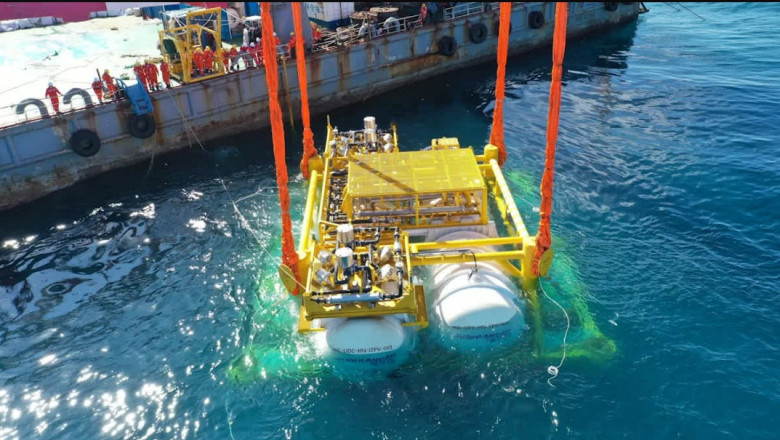
views
A new era in energy-efficient computing is emerging off the coast of Shanghai, where Beijing Highlander Digital Technology Co. is set to launch a revolutionary underwater data center in mid-October 2025. This initiative underscores China’s ambitions to lead in artificial intelligence (AI) while tackling the growing climate and resource pressures linked to modern data infrastructure.
Harnessing the Ocean: Game-Changing Cooling for AI
The heart of the project is a large, yellow capsule filled with high-performance servers, submerged beneath the sea and naturally cooled by ocean currents. Unlike traditional land-based data centers, which depend on power-hungry air conditioning systems, this underwater facility leverages constant water temperatures to dissipate heat. According to Highlander’s vice president Yang Ye, “underwater facilities can save approximately 90 percent of energy consumption for cooling”—a transformative figure considering the rapid growth of AI workloads.
In synergy with the cooling innovation, the facility is powered primarily by nearby offshore wind farms, resulting in a fully sustainable ecosystem. Developers claim the combined approach could reduce overall energy use by 30–40% compared to conventional centers.
Strategic AI Expansion and Advanced Infrastructure
Highlander’s Shanghai module is already attracting attention from major clients, including China Telecom and state-owned AI computing ventures. This marks a notable scale-up from Highlander’s award-winning Hainan island underwater data center, which became the world’s first commercial facility of its kind in 2023 and expanded further in early 2025. The Hainan hub now serves diverse clients across AI model training, marine research, and more—helping to reinforce China’s rapidly growing AI ecosystem.
Navigating Technical and Environmental Challenges
Building infrastructure below sea level introduces a host of engineering complexities. One critical hurdle is shielding electronic components from corrosive saltwater. Highlander engineers have responded with specialized glass-flake coatings on all steel modules, while a unique elevator-like system provides convenient access for maintenance and upgrades.
Despite these solutions, some environmentalists and marine scientists continue to voice caution. Ecologist Andrew Want (University of Hull) notes that heat dispersal “could attract some species and drive others away”, emphasizing that “there’s not sufficient research being conducted yet” on long-term impacts. Nonetheless, Highlander asserts that independent monitoring finds temperature increases remain below one degree Celsius, with “virtually no substantial impact” on the surrounding marine ecosystem.
Pushing Past Global Milestones
While Microsoft’s Project Natick famously piloted underwater data centers off Scotland in 2018, it never advanced to commercial scale. China’s integration of proven immersion cooling technology with renewable energy and state support signals a new benchmark in sustainable, AI-ready infrastructure.
As AI computing demands skyrocket worldwide, the success of the Shanghai underwater facility could reshape how the industry balances efficiency, environmental stewardship, and scalability.




















Comments
0 comment